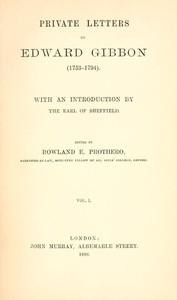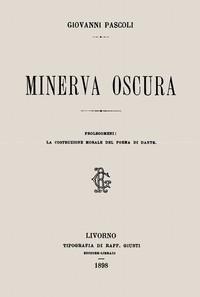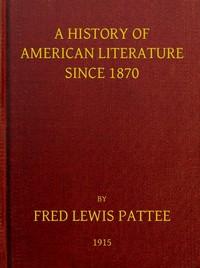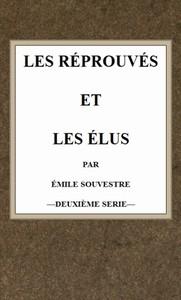|
|
Read this ebook for free! No credit card needed, absolutely nothing to pay.Words: 41918 in 26 pages
This is an ebook sharing website. You can read the uploaded ebooks for free here. No credit cards needed, nothing to pay. If you want to own a digital copy of the ebook, or want to read offline with your favorite ebook-reader, then you can choose to buy and download the ebook.

: In the Open: Intimate Studies and Appreciations of Nature by Kirkham Stanton Davis - Natural history Outdoor books@FreeBooksWed 07 Jun, 2023 rn in the Fatherland. I do not know if our affinity is greater with the bob-white and the ruffed grouse, which hear no call to depart, or with these nomads of the earth. In the coldest weather, redpolls, crossbills and snow-buntings come to us as to a land of plenty. This is near enough the equator for these hardy birds--this is their genial South. It is pleasant to reflect that the falling mercury, which deprives us of the last of the summer residents, will at the same time bring us some dweller in the far North which perhaps otherwise we should not see. The advancing season makes itself known through the songsters; they have keener perceptions and receive other intimations than come to us. Day by day, as by appointment, they reappear from Florida, from the Amazon and the Orinoco, and make themselves at home again in northern pastures. I have come to look for the tree-swallows as regularly on the 1st of April, as for the oriole on the 10th of May, as if these were calendar events of real importance. Between the middle of April and the 20th of May lie the incomparable days of the migrating warblers--days of discovery and adventure, when the torpor of indifference slips away, and, like a subtle fire in the blood, is felt that enthusiasm the years do not diminish. When, at night, the small birds pass overhead, their faint silvery "tseeps" come out of the silence with a weird suggestion of voices from the unseen world. Now, the days are full of pleasing suggestions because of little birds shyly flitting with plant-down and with rootlets and dried grasses. Some are unmistakably house-hunting, and the female turns herself about in the crotch of a limb, trying if it be of the right proportions. Interest in bird life centers about this season. This is their life; the rest is a preparation or a waiting. It is only natural there should be an air of secrecy about them now. They are doing their best to conceal and elude, as indeed they must, and this necessity, being uppermost in their minds, becomes evident in their manner. While I am watching a pair of pewees gather lichens from an old maple for their beautiful shallow nest, the barn-swallows shoot by with mud for their adobe huts. Now and then one pulls from the mud a few fine rootlets--perhaps of the white violet or gold thread growing there--and carries them off. They evidently know their trade. A chestnut warbler appears with some plant-fiber in her bill, and gives a cluck of surprise and disgust to find some one on the ground where she thought to have her secluded and private estate. She hesitates with the down still in her bill; it is evident what she must be thinking; but at length she decides to risk it, and enters the huckleberries. She has, of course, gone into the bushes a long way from the nest. One has great sympathy with the birds in their little circumventions and dissimulations, knowing their tribulations. They live among their numerous foes much as did the early settlers in this land,--that is to say, in spite of them. The weasel, the owl, and the cat--the terrible cat--are appointed to decimate the population of birds. In the several nests of warblers, I am observing, the thrifty housewife is evidently the home-builder, whereas the male seems to take it upon himself merely to cheer and encourage her. After she has constructed a framework she settles herself in this and builds the wall around her, quite as if she were fitting a garment to herself. Her little ways while so engaged are distinctly feminine. To think that she has never been taught her trade, has perhaps never before fitted such a garment, and she is already deft and expert! The pair seem to take an almost human satisfaction in their home. Now and again they appear to talk it over together. Who can doubt they have some pleasure in this preparation, that they have bird-plans and bird-hopes? We do not really know, a bird till we have found its nest and seen it at home. When I came upon the nest of the snowbird in the midst of a clearing in the mountains, it was like visiting the house for the first time of one I had known for years--a person of some distinction at that. It was placed high and dry on a tussock in a flaming patch of hawkweed. She had an eye for the practical, and knew better than to put her house where the cellar might be flooded. The four greenish mottled eggs were her one priceless treasure, which was to her as life itself. They were warm, and the whole aspect of the nest was sweet and inviting. It appeared to breathe some feminine element, so dainty was it, so begirt with flowers. A humming-bird's nest that I have been watching the present season is placed on a pitch pinecone, and appears to a casual view to be the cone itself. It seems as if the bird had it in mind to simulate this or she would not have chosen such a peculiar site, for it affords no advantage from a structural point of view. If this be true it is a departure from all traditions, and shows a bird of some character and originality. In other respects it is like any humming-bird's nest--one of the most exquisite of all natural objects. In the course of ten days, in place of one of the eggs appeared a small and peculiarly homely object which resembled a spider as much as anything. Two days later the other egg was hatched. At this stage the bills of the young birds were very short, but day by day they lengthened and grew more needlelike. At length one bird opened its minute and shining black eyes for the first time. The other fell from the nest on the following day, before its eyes were opened, so that all it had known of life was the consciousness of hunger. The female fed her young with much less frequency than do other birds. When so engaged she perched upon the rim of the nest and pumped the food into them after the manner of her kind. As she flew to and fro, she appeared to move always at the same speed, as if her wings were keyed to a definite rate of vibration and could not vary. Gradually the young bird emerged from its gruesome infancy, and day by day became more sylphlike. Heavy winds prevailed, but the diminutive cradle remained unharmed, though branches were everywhere blown from the trees. So was the wind tempered in that case at least, till one day the sylph left the nest, as a thistle-down might detach itself and sail away on the breeze. Birds have their home-trees, and one whose traditions are of the pine is not drawn to build in hardwoods. The woodthrush is associated with the dogwood, as the catbird with the smilax, and the oriole with the elm. There are ancient apple orchards which have come to serve only the bees and the birds; but what temples of music in May with the hum of bees, and in June with the song of wrens! At this season you cannot do better than to set out for one of these old-time orchards, neglected of man and favored of heaven. The virile hum of honey-and carpenter-bees descends from the flowery summits to the listener beneath, the contented music of a race dwelling overhead and nearer the skies than we. It is such an apple--Baldwin, pippin, or russet--gnarled and archaic in trunk and a bower of beauty above, which becomes the home-tree of that feathered gnome, the house-wren, a sprightly elf, living in the depths of a tree trunk and yet full to the brim of song. He may derive of the flowing sap some genial trait and takes to the apple as a swift to the chimney, or a redwing to the swamp. After the cold rains of late May have taken off the blossoms and with them the bees, the place becomes melodious with his song. It is thenceforth his estate, and he dominates it with his small personality. With him his house is his castle, and in true medieval fashion he barricades his door. Within is snug enough, but without it has a feudal and forbidding look,--a formidable barrier of twigs, erected perhaps against the house-sparrow or for fear the robber-owl may peer too closely. In this choice of a building site the bird reveals something of itself. Contrast the wren with the phoebe, a cliff-dweller, loving the contact of the ledge itself better than any bush or tree. The song-sparrow has an eye for the wild rose and the yellow warbler for apple blossoms, but the phoebe has some austere traits which make the stern rock more congenial to her. Some birds are architects, others builders merely. The vireos are a family of artists, whereas the improvident cuckoo will not even lay a proper floor to her nest. Free books android app tbrJar TBR JAR Read Free books online gutenberg More posts by @FreeBooks
: Private Letters of Edward Gibbon (1753-1794) Volume 1 (of 2) by Gibbon Edward Sheffield Henry North Holroyd Earl Of Author Of Introduction Etc Prothero Rowland E Rowland Edmund Baron Ernle Editor - Great Britain Intellectual life 18th century; Gibbon Edwar@FreeBooksWed 07 Jun, 2023

: Minerva oscura Prolegomeni: la costruzione morale del poema di Dante by Pascoli Giovanni - Dante Alighieri 1265-1321. Divina commedia; Dante Alighieri 1265-1321 Criticism and interpretation IT Letteratura@FreeBooksWed 07 Jun, 2023
|
Terms of Use Stock Market News! © gutenberg.org.in2025 All Rights reserved.






